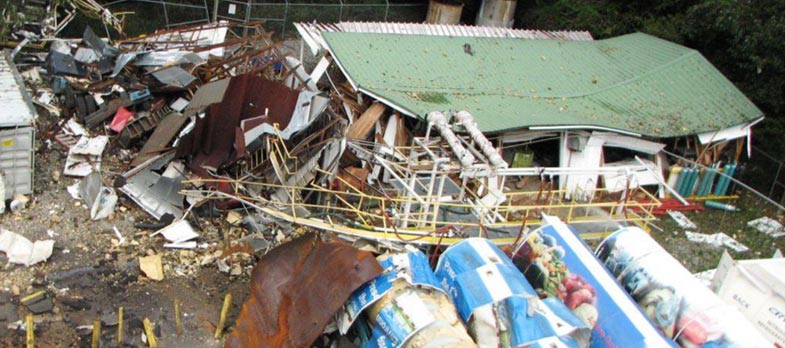Because of a legal loophole, safety procedures were dangerously inadequate at a Cantonment nitrous oxide plant, and the lax environment led to a chemical explosion that killed one person, according to the Chemical Safety Board.
Although there are a number of federal rules and guidelines for hazardous chemical productions, these protocols do not technically apply to nitrous oxide. So, during its investigation, the CSB noted a number of safety deficiencies, and almost all of them contributed to the fatal incident. Lead investigator Dan Tillema and his team ruled out common causes like static electricity and instead focused on a heat pump as the primary culprit. Specifically, according to the report, Airgas did not consider alternative designs for the defective heat pump even though management knew it was hazardous, the company did not review the situation thoroughly enough to protect workers, and the existing safety mechanisms, such as a safety interlock that supposedly shut down the pump in an emergency, were woefully inadequate.
All these issues came to a head on August 28, 2016. Everything began normally, as nitrous oxide is a fairly stable chemical. However, the defective transfer pump overheated the gas, triggering an explosion due to rapid decompression. The primary device essentially became a bomb that flung shrapnel for hundreds of feet. To hopefully prevent further incidents, the CSB issued a number of safety recommendations to Airgas and several other entities. “Our recommendations reiterate the importance of safety management systems as critical to control hazards during the manufacturing, transferring, and shipping of nitrous oxide. Strong safety management systems are good business practices, which also save lives,” remarked CSB Chair Vanessa Sutherland.
Since the CSB is not a regulatory agency it did not issue any fines, but the entity will most likely forward its report to the Occupational Safety and Health Administration.
The Top Ten List and the Fatal Four
As the above story illustrates, plant safety is important to everyone, and not just the injury victims. Because of the dangerous environment, everyone at the Airgas facility at Cantonment lost their jobs and the company lost a vital revenue source.
Safety is largely a matter of voluntary compliance, because OSHA has about 2,100 inspectors to police eight million worksites around the country, which translates to one inspector for every 60,000 workers. Unfortunately, many companies calculate that it is more economically feasible to break the rules and risk being caught than it is to implement an effective safety system.
As a result, investigators issue millions of citations every year. From the home office in Milwaukee, Wisconsin, here are the top 10 safety violations:
10. Inadequate/Unsafe electrical system design,
9. Defective electrical wiring and/or equipment,
8. Inadequate machine guards,
7. Unsafe construction ladders,
6. Defective industrial trucks,
5. Lack of control over hazardous energy sources,
4. Inadequate respiratory protection,
3. Unsafe scaffolding,
2. Incomplete hazard communication system, and
1. Inadequate fall protection.
A number of these deficiencies are common in the construction industry, and especially in states like Florida, a number of these workers have limited English proficiency, which makes them even more vulnerable.
Moreover, a number of the Top Ten dangerous activities pertain to what OSHA calls the Fatal Four of:
- Falls,
- Struck by an object,
- Electrocution, and
- Caught between two objects.
The agency estimates that the Fatal Four account for almost two-thirds of construction worker deaths, and simply eliminating these four common hazards would save over 600 lives a year.
Remedies Available
Workers’ compensation is normally the exclusive remedy for job injuries, but if OSHA or any other government agency determines that the company wilfully violated generally accepted safety standards, the tort exception may apply. Essentially, if the victim proves that the employer intentionally disregarded a known risk and thereby jeopardized the safety of its workers, the law says that workers’ compensation may not be an adequate alternative to a civil lawsuit.
This issue comes up frequently in situations where an investigator found a deficiency and the company did not adequately address it before sending workers back to the same location. The same result could apply to the Airgas explosion, because the company knew about the defective pump yet did nothing to make the environment safer.
If the tort exception applies, injured victims are entitled to additional compensation for their noneconomic damages, such as emotional distress and loss of enjoyment in life.
To begin your tort or workers’ compensation claim, contact Barnett, Lerner, Karsen & Frankel.

